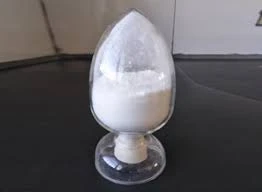Understanding PQQ Absorption A Key to Unlocking its Benefits
Pyrroloquinoline quinone (PQQ) is a fascinating compound that has garnered attention in the fields of nutrition and health due to its potent antioxidant properties and potential health benefits. Naturally occurring in various foods, such as fermented soybeans, green peppers, kiwi, and spinach, PQQ is often touted for its role in energy production, cellular health, and possibly even neuroprotection. However, understanding how PQQ is absorbed by the body is critical to fully harnessing these benefits.
The Basics of PQQ
PQQ is a redox cofactor involved in biological processes crucial for the metabolism of energy in cells. It acts not only as an antioxidant but also as a signaling molecule, influencing cellular mechanisms that support energy production and health. Research has suggested that PQQ may play a role in increasing the growth of new mitochondria—often referred to as the powerhouses of the cell—which are essential for energy production.
Mechanisms of Absorption
The absorption of PQQ in the human body is a vital aspect that influences its bioavailability and subsequent health benefits. Once ingested, PQQ must undergo various processes before it can exert its effects. The initial step involves the digestion of PQQ-containing food or supplements in the gastrointestinal tract.
Studies indicate that PQQ is primarily absorbed in the small intestine, where it can pass through the intestinal wall. However, the efficiency of this absorption can vary based on several factors, including the form of PQQ consumed, the presence of other nutrients, and individual differences in gut health.
PQQ exists in both natural and synthetic forms, with some research suggesting that the natural forms, such as those found in food, may be more readily absorbed than synthetic alternatives. Additionally, the simultaneous intake of other compounds, like fats and fiber, can impact PQQ’s absorption. While fats may enhance the absorption of certain fat-soluble nutrients, they can sometimes interfere with the uptake of water-soluble compounds like PQQ.
pqq absorption

Factors Influencing Absorption
1. Dietary Composition The overall composition of one's diet can significantly influence PQQ absorption. A well-balanced diet rich in variety can support better absorption rates. Conversely, diets high in processed foods and low in natural nutrients might negatively impact gut health, thereby affecting how effectively PQQ is absorbed.
2. Gut Health The state of an individual’s gut health plays a crucial role in nutrient absorption. Conditions such as leaky gut syndrome or dysbiosis (imbalance of gut bacteria) can hinder the absorption of PQQ and other nutrients, limiting potential health benefits.
3. Age As individuals age, changes in digestive function can lead to reduced absorption rates of various micronutrients, including PQQ. This underscores the importance of staying informed about nutrient intake across the lifespan.
4. Supplementation vs. Food Sources PQQ is available as a dietary supplement, often marketed for its cognitive-enhancing capabilities. However, the bioavailability of PQQ from supplements compared to whole food sources is still an area of active research. While supplements can provide a concentrated dose, it is essential to consider that the body might better absorb nutrients in their natural forms.
Conclusion
Understanding PQQ absorption is critical for anyone looking to enhance their health through diet or supplementation. Although PQQ presents an exciting avenue for potential health benefits, including improved energy levels and cognitive function, the specifics of its absorption must be considered.
To maximize the benefits of PQQ, individuals should aim for a balanced diet rich in natural food sources, pay attention to gut health, and consider age-related changes that may affect nutrient absorption. As more research unfolds, further insights into the absorption mechanisms of PQQ may provide clearer guidelines on optimizing its intake for health enhancement. Ultimately, fostering overall well-being through a wholesome diet combined with strategic supplementation may be the best approach to harnessing the full potential of this remarkable compound.

